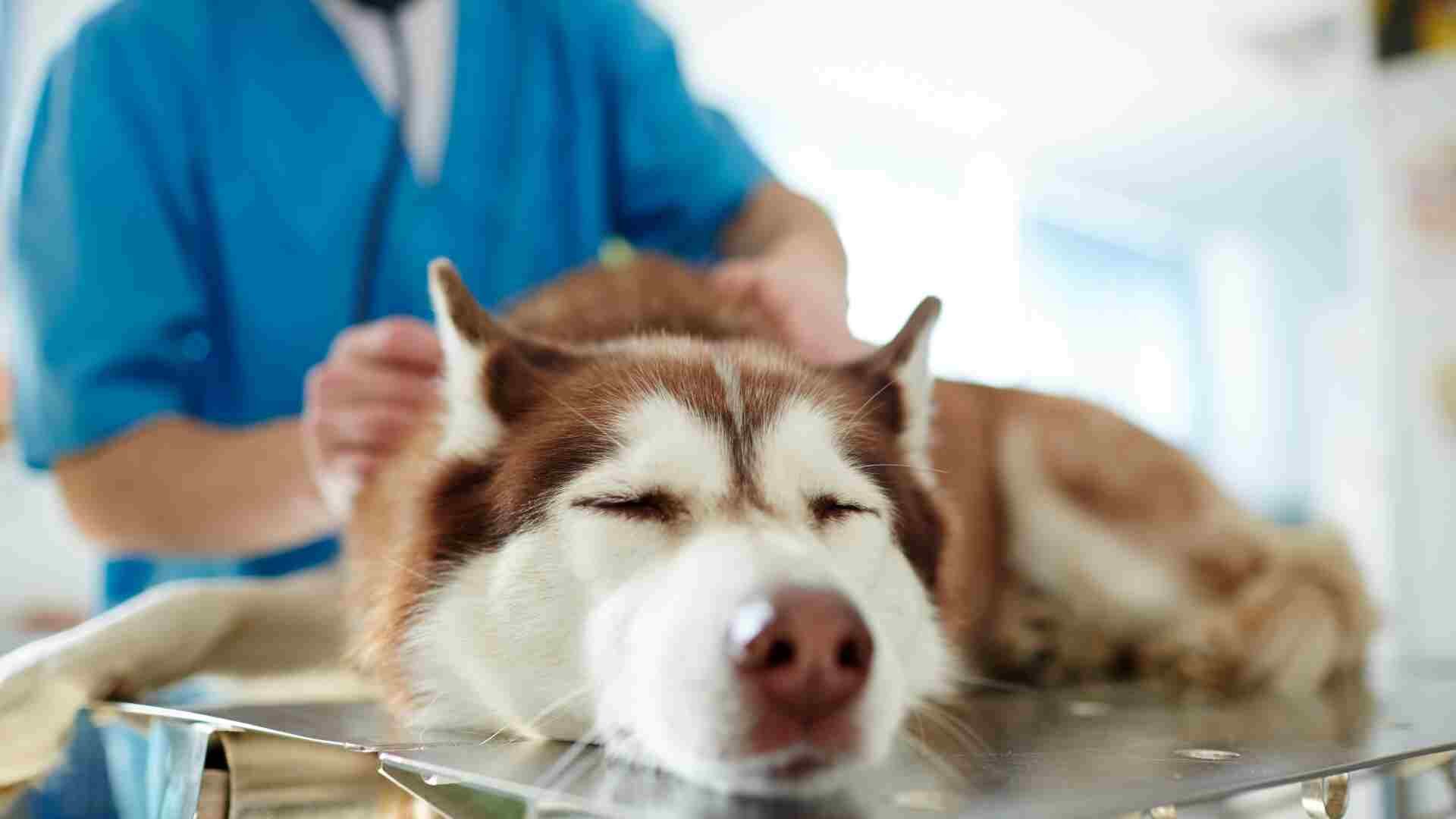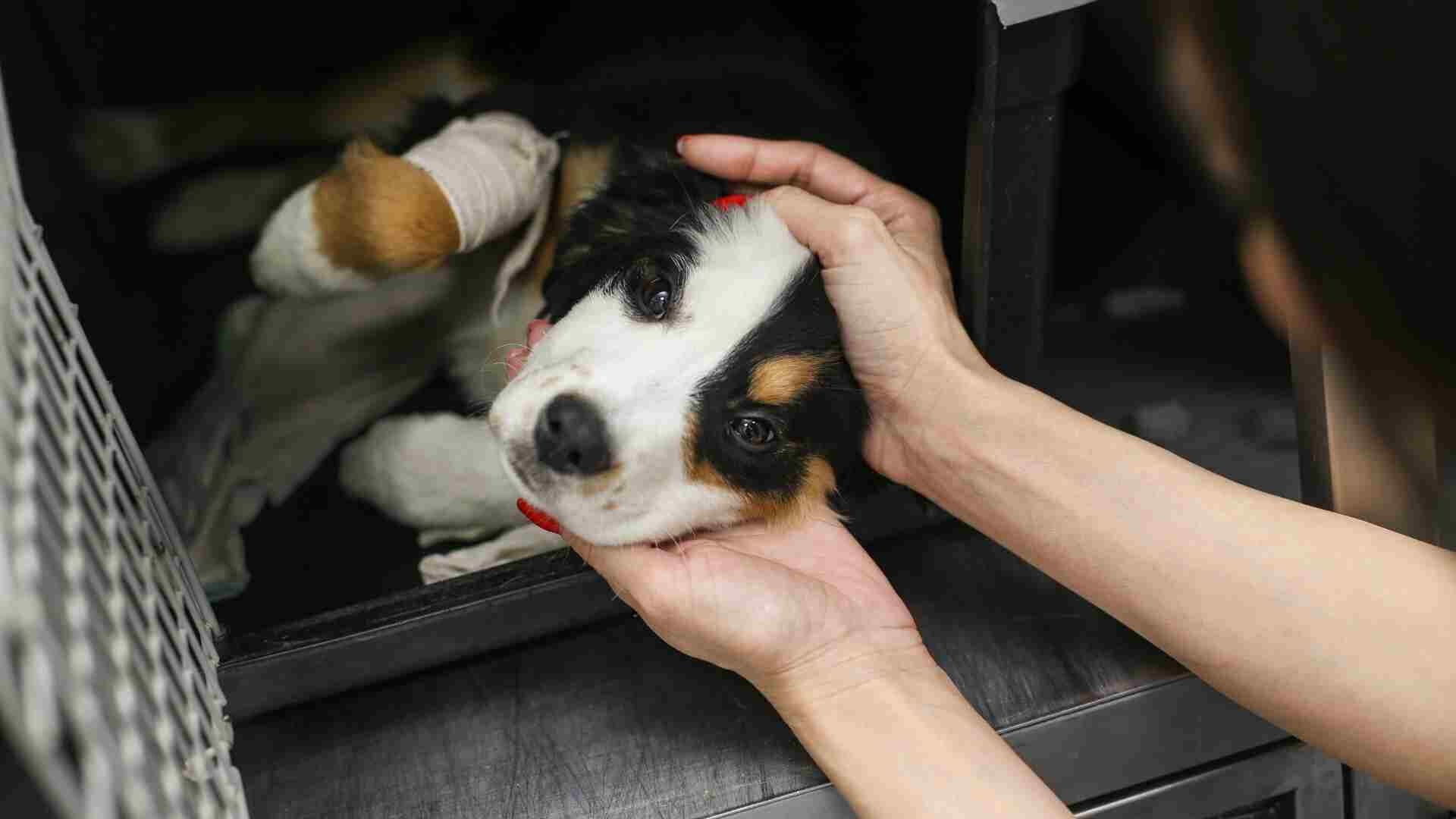What happens when there is a dog with Down syndrome? Keep reading to find out.
Down syndrome is a “genetic condition characterized by an additional whole or partial copy of chromosome 21 produced by faulty cell division.” Down syndrome is defined by developmental disorders and physical features induced by extra genetic makeup.
Down syndrome is a chromosomal issue that affects many people. It’s linked to cognitive impairments and physical traits and an increased risk of some health problems.
There are numerous similarities between humans and dogs regarding health difficulties; both dogs and humans can suffer from anxiety, neurological diseases, diabetes, and cancers.
Down syndrome is characterized by physical characteristics such as a flattened face or upwards slanting eyes and modest to severe intellectual difficulties and developmental problems. Medical concerns such as hearing loss, heart disorders, and eye illness may affect people with Down syndrome.
Can dogs have down syndrome?

Dogs and people share numerous genetic similarities, but there are also significant distinctions. On the other hand, humans have 23 sets of chromosomes, whereas dogs have 39.
The presence of a partial or complete copy of chromosome 21 causes down syndrome. However, replicating all or regions of chromosome 21 might have varying impacts on the two species.
In a nutshell, the answer is still no. The condition of Down syndrome in dogs has yet to be identified. There are three plausible explanations:
- In dogs, chromosomal anomalies like this usually result in early death.
- Genetic testing to diagnose dogs with Down syndrome has not been carried out.
- In dogs, the disease does not exist.
What is down syndrome?
Chromosomes are paired bundles of genetic makeup that are kept in the cells of dogs, humans, and other animals. Humans have 23 chromosomal pairs. A chromosome that is more than the anticipated 46 results in an embryo that cannot develop and expand. However, in the 21st chromosome, an extra copy of a portion or all of the chromosome, known as “trisomy 21,” can result in an embryo that thrives and develops into a newborn but has several odd characteristics. Down syndrome is the name for this condition.
Slanted eyes, a low neck, a flat-looking face and nose, atypical outer ears, a small chin but a wide tongue, and a solitary crease on the palm are all physical characteristics of people with Down syndrome.
Down syndrome patients often suffer a lack of muscle tone and limited growth. Their physical and mental development lags further behind their peers; individuals with Down syndrome could have an IQ of 50, comparable to that of an eight- to a nine-year-old kid.
People with Down syndrome are also more likely than others to suffer from health issues such as poor vision, heart problems, gastrointestinal issues, and infertility. Even with contemporary health care, their average lifespan is lower, spanning 50 to 60 years.
What are the symptoms of down syndrome in dogs?

Below described are some of the common symptoms of Down syndrome-like disease in dogs.
1. Facial or bodily characteristics that are unusual
Dwarf-like and malformed face traits are seen in dogs with this condition. A short neck, flat face, small head, vertically slanting eyes, and abnormally shaped ears are some of the most prevalent anomalies. Furthermore, dogs with Down syndrome frequently have warm, dry noses. They also exhibit odd skin patches, malformed or incomplete legs, and hair loss or shedding.
2. Congenital heart disease (CHD)
It’s evident in dogs with Down syndrome as their dysfunctional circulatory systems. They were born with congenital disabilities.
3. Eyesight problems
Dogs with Down syndrome have poor eyesight due to their delayed development. In addition, cataracts in at minimum one of their eyes are possible. Examine your dog’s eyes for cloudiness. If you see cloudiness, it could signify that a cataract is forming.
4. Hearing issues
During the presence of other dogs, a dog with Down syndrome is frequently the slowest to obey or react to instructions, even though this symptom is challenging to notice.
5. Behavioural problems
Dogs with Down syndrome frequently exhibit unusual attitudes and traits, such as constant weeping, howling, or whining. They might be reserved strangely. Puppies with this condition also do not progress swiftly through the developmental phases.
It’s challenging to feed, and toilet train them. This is due to their inability to control their bladders. They may still go outside and then return to urinate on the carpet inside. When interacting with them, you’ll need a lot of patience.
6. Problems with the skin
Skin problems affect a large number of dogs with Down syndrome. They may be susceptible to minor irritants, have odd or missing spots, and shed heavily. As a result, they develop an allergy and other health problems soon.
7. Pain that appears from nowhere
Since a dog with Down syndrome typically has the condition throughout his body, his internal organs may be improperly formed. He may experience pain as a result of this.
8. Thyroid problems
Dogs with Down syndrome may have a dysfunctional thyroid, which can cause problems with metabolism and temperature. They have such a lower body temperature than other dogs.
9. Discharge
Other disorders that cause a bloody flow from the rectum in dogs with Down syndrome are possible. During the later stages of their syndrome, you might detect a bloody flow coming from their body.
What causes Down syndrome in dogs?
If Down syndrome exists in dogs, it’s not triggered by anything specific, such as a pathogen or a condition that could be passed from one dog to the next. It’s just a hereditary condition that causes puppies to have extra copies of their chromosome sets.
There is no method to foretell if a puppy will have Down syndrome, even if the mother is sent to an animal clinic for ultrasound scans and other diagnostics during pregnancy.

Various disorders share the same symptoms as Down syndrome. Furthermore, many of these health problems are congenital, meaning dogs are born with them.
Similar diseases in dogs include,
- Portosystemic shunt
- Pituitary dwarfism
- Growth hormone deficiency
- Congenital hydrocephalus
Is down syndrome in dogs similar to Down syndrome in humans?
Even though there isn’t evidence that dogs can develop Down syndrome in the same way humans do, they could be born with genetic problems that mimic Down syndrome.
Here are some of the health problems that such pets may face:
- Cognitive impairment
- Short limbs or a physique that is shorter than usual
- Diseases in the eyes
- Thyroid growth hormone deficiency causes incomplete development
- Hearing loss (can be complete or partial)
- Problems with the heart
- A broad brow
- Gait abnormality
- A tongue that is larger than usual
Only a small percentage of dogs with an aberrant number of chromosomes survive to adulthood and develop these symptoms, as most canines with an unusual count of chromosomes die shortly after birth.
What are the natural practices to help your dog?
1. Support your dog’s digestive system
You must boost your dog’s microbiome to maintain good intestinal health. The gut generates digestive hormones and enzymes, and other health-related tasks. Because it makes up more than 90% of your dog’s immune system, it’s critical to his ability to fight disease.
And this is where the healthy bacteria keep the harmful bacteria in check. Your dog needs a good blend of probiotics and prebiotics to keep his gut healthy. Without antibiotics, which can disrupt your dog’s microbiome’s balance, go for natural treatments.
2. Sustain a raw and whole-food diet
Poor growth could cause muscle weakness and atrophy in your dog. It is recommended to feed a raw food diet with protein content. It will give them enough nutrients and amino acids to help them grow and heal their muscles.
Digestive enzymes and probiotics will aid in the absorption of nutrients by his digestive system. Then his diet will provide him with the maximum nourishment.
If your dog isn’t eating, you could use appetite enhancers like fresh and dried herbs if your dog isn’t eating. Peppermint, dill, ginger, fennel, and alfalfa are some herbs that can help special needs dogs eat. Green tripe, garlic, and bone broth are other excellent and nutritious extras.
3. Detox your dog
If your dog is on any drugs or has been vaccinated, you must perform regular detoxes. Herbicides and pesticides impact your dog if you reside in an area where they are sprayed. Toxins can be found in his food, air, residence, and water.
As a result, your dog would benefit from a detox performed several times a year. It washes his liver, gastrointestinal tract, skin, and kidneys, all systems the body employs to keep itself clean daily.
Why can’t dogs have Down syndrome?
Down syndrome is a genetic disease in which an additional 21st chromosome is present in people’s DNA.
Humans usually are included with 23 pairs of chromosomes for 46 chromosomes. As a result of the additional chromosome, persons with the disease have 47.
The existence of an extra chromosome can indicate birth abnormalities. A small head, a lower neck, and a less matured muscle tone are some of the prevalent signs of this syndrome in people.

On the other side, dogs have 78 chromosomes divided into 39 pairs. As Down syndrome is defined as having 47 overall chromosomes, dogs cannot develop the condition since they have far more chromosomes than humans.
Another reason canines cannot develop the disease because an extra 21st chromosome in their DNA would have different impacts on a dog’s DNA than on a human’s DNA. As a result, even if a dog had an additional 21st chromosome, it wouldn’t exhibit the same symptoms as people with the condition.
How to care for a dog with symptoms like Down syndrome?
Below listed and explained are various activities to care for a dog with Down syndrome-like diseases.
1. Attention
You should keep in mind that because special needs dogs’ brain development differs from typical dogs, they can become violent at times.
You must consult your veterinarian to see if there are any natural remedies you may use to relax and quiet your dog. There are a lot of soft chews and diffusers on the market these days, and some of them genuinely work.
If you have a dog with a record of aggressiveness and small children in your home, keep a watch on the dog’s behaviour as often as feasible. Teach your children how to interact safely with their dog companions.
2. Sanitize recurrently
Dogs with Down syndrome often have trouble controlling their bladder. As a result, they will have to empty themselves indoors, necessitating the use of dog diapers. These are necessary goods because you won’t be able to toilet train him, and you don’t want your house to be a shambles.
To avoid infection, make sure you replace his diapers regularly and clean up. Remember to sterilize his living space as well. He must also sleep in a secure and comfortable environment. Bear in mind that animals with Down syndrome are inherently afraid of everything in their environment, making them prone to shredding stuff out of anxiety and fear.
3. Enhance their living area
Humans having special needs are cared for by others, yet they also reside in a secure environment. Especially by first guaranteeing a dog’s living environment, the life quality of a dog with Down syndrome is enhanced.
Eliminate any obstacles that the dog might encounter that could injure them. Let your dog wander freely throughout the house, but keep a watch on them if they have to go into mischief.
4. Give adequate exercise
Any genetic abnormality in dogs may make exercise challenging, but that doesn’t imply you must avoid it entirely. Animals with Down syndrome-like characteristics may develop stiffness in their limbs and muscular and joint problems.
They may also have heart problems. Though dog owners should avoid overdoing it, a little exercise is still required to keep a dog’s body in good working order. Give your dog massages multiple times a day and take them for walks as much as feasible. Take it slowly and step by step. The appropriate toy can go a long way toward keeping a dog with special needs happy while also allowing them to let off steam.
5. Remove any physical impediment
Have just as much room as possible in your household for the dog to roam around within. Due to his limited vision, a dog with Down syndrome may collide with massive objects or walls. This may result in it being damaged and injured. This is the primary reason you must eliminate any potential threats in his environment. If your home has stairs, dog barriers or baby gates can be installed to keep him from collapsing.
You should also place throw rugs throughout your home to avoid slipping and becoming harmed in the procedure. Non-slip socks can also give traction to your Down syndrome dog. You can buy assistive devices like a wheelchair, especially for dogs if he does have a missing limb owing to the condition. Of course, his wheelchair should be able to move around freely in your home.
6. Consider food, water, and peace.
Dogs with Down’s syndrome can shift dramatically from one day to another. They can overheat or drink far too much water at times. The next day, though, could be the opposite way around, with the dog refusing to drink or eat everything.
A dog with particular requirements requires constant access to fresh, high-quality pet food and tasty treats.
Because some of these pets are frequently in discomfort, the sleeping environment for the dog must be as relaxed as possible. If your dog has Down-like syndrome, have plenty of cushions and the smoothest and most comfy pet bed you could purchase.
7. Check-ups should be done regularly
Whereas most healthy adult dogs only need to see a vet once a year, dogs with illnesses similar to Down syndrome in people require more frequent visits.
Visit the veterinarian once every two to three months. That may sound excessive, but there’s no way for us to know what changes may occur in the puppy’s brain, mainly as they grow older.
Pet owners can easily extend their dog’s life expectancy by taking them to the veterinarian consistently. All health conditions are easier to cure if caught early, which can be essential to preserving a puppy’s quality of life.
Below are five frequently asked questions (FAQs) related to dogs with down syndrome, followed by appropriate answers.
Is Down syndrome prevalent in dogs?
Not really. Humans have 23 chromosomes. Meanwhile, dogs have 39. Down syndrome is categorized by having 47 chromosomes (23 sets plus an extra copy of chromosome 21). Hence it can’t be identified in dogs, who typically have 78.
Dogs can have genetic defects that appear as Down syndrome-like symptoms and physical traits.
What characteristics are linked to Down syndrome?
The inclusion of additional genetic material has a variety of consequences. Intellectual disability is possible in individuals with Down syndrome, but it varies from person to person and is usually mild to moderate.
Down syndrome does have some physical characteristics, such as weak muscle tone and a line across the palm, according to the US Centers for Disease Control and Prevention (CDC).
What can I expect from a dog with special needs?
This isn’t to argue that there aren’t any trade-offs. It’s possible that your dog will not live as long as a typical dog. Due to his cognitive and physical deficiencies, you can’t expect him to accomplish all a regular dog can, such as “watchdog” duties.
Is it possible for my dog’s behaviour to change due to Down syndrome?
Special requirements Dogs have a natural apprehension of everything in their environment. They may be prone to harmful activity due to their fear and anxiety. When they are left alone, they may experience separation anxiety. To help take care of your particular dog, you’ll need understanding and compassion.
Is it safe to bring another dog into the house?
Since Down syndrome and genetic abnormalities in dogs are not contagious, the answer is yes. Mixing with other dogs can be good for the sick dog. Dogs, incredibly sick or disabled dogs, have their ways of engaging with one another. If your special dog seems to have a bloody discharge or isn’t potty-trained, you should prevent other dogs from eating its faeces to avoid bacterial illness.
Conclusion

This article addressed the conditions of dog with Down syndrome. The article explains if dogs could have Down syndrome and what could cause diseases. Moreover, natural remedies and tips for special needs dogs have been listed and explained. Frequently asked questions regarding a dog with down syndrome are also answered.
Bottom up
Please comment below about your ideas and share this “Can Dogs Have Down Syndrome: Guide to Care with 7 Ways” article with your friends.
Stay tuned with our website to find out more exciting stuff. Don’t forget to check out our previous articles too.
Until the, Read about, How Much Exercise Does a Corgi Need: 10 Activities Guide





